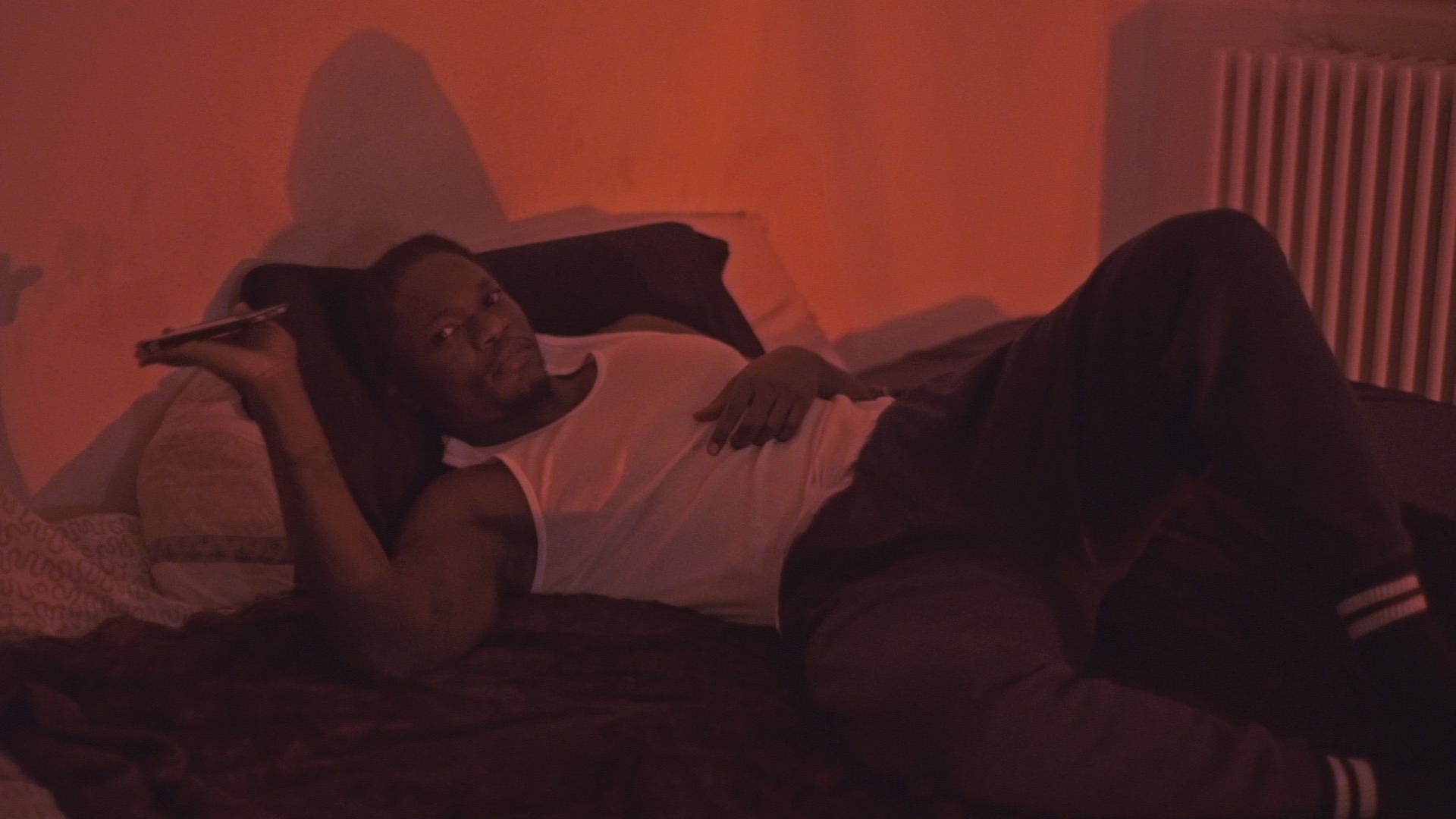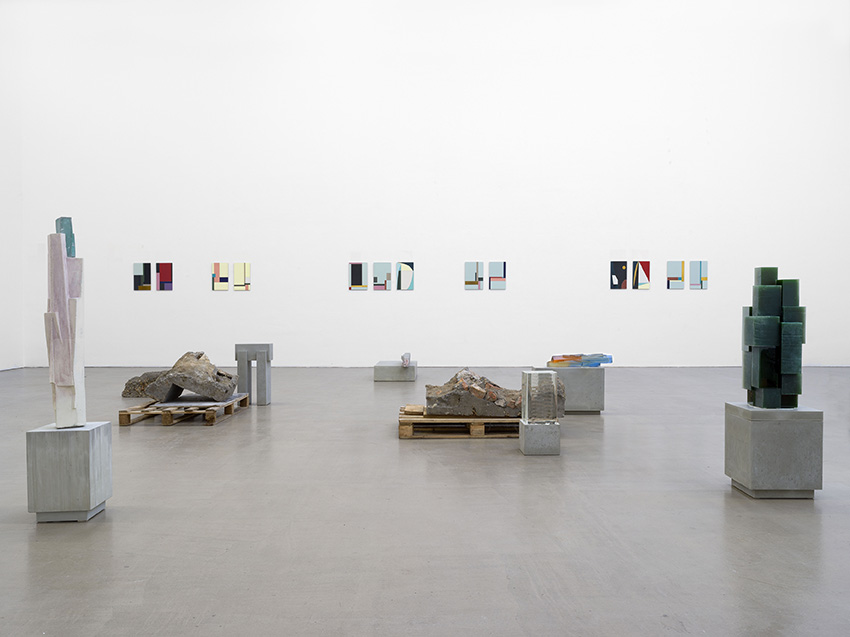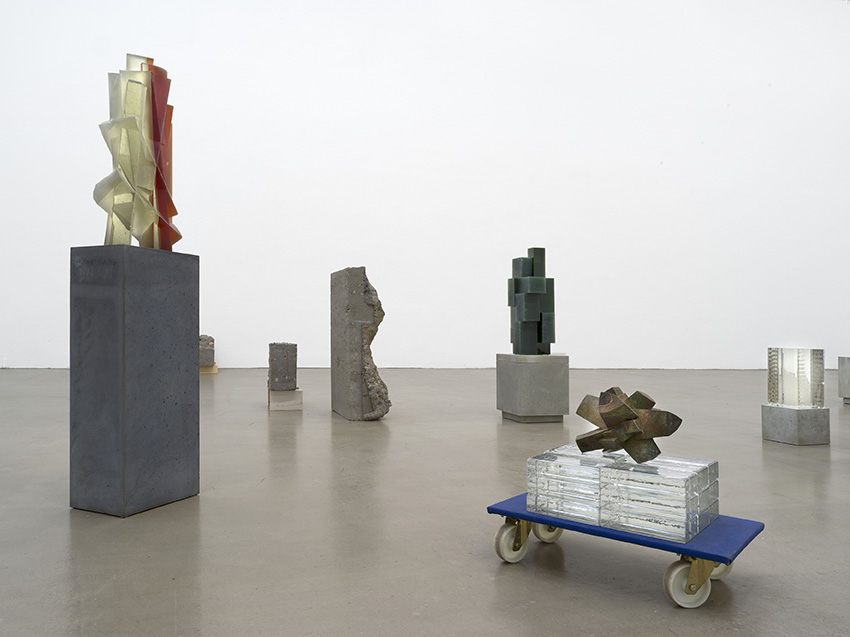Jana Schulz
Home Series
January 8 - February 5, 2022
Opening: Saturday, January 8, 12am - 7pm
Galerie EIGEN + ART Leipzig / Schaulager
"In 2020, when Covid largely emptied out or closed the (semi-)public social spaces in Berlin, I went out and talked to men on the street to ask if I could go along with them to their homes, bringing my camera with me. In this time, I embarked on a new video project, Home Series, portraits of young men in their apartments. I met my first protagonist, Ashley Temba, on Alexanderplatz. In Home Series there is a stronger focus than before on my relationship with my counterpart. The work centres on how the other person is approached, as the dynamic shifts between distance, closeness and intimacy. In this open process the feeling of uncertainty on both sides plays a key role, while also facilitating a candid approach. Time assumes an important role here in establishing mutual trust. I deliberately work without a precise concept, using the camera to observe everyday situations."
Jana Schulz about her video work Home Series

-------------------------------------------------------------
Kai Schiemenz
Kolk
November 6 - December 18, 2021
extended until January 29, 2022
Galerie EIGEN + ART Leipzig
Film & Edit: TABLEAU Films (Matthias Maercks)
Music: Matthias Hermann

“Kolk”? This German word, which sounds like a fantasy, describes a condition in nature: a deep pit on a riverbank produced by stones tumbled by vortices in the water. Kai Schiemenz gave this paradoxically resonant and soundless term to his current exhibition in the Galerie EIGEN + ART Leipzig. The showing is an experimental field in which elaborated glass works named for crystals come together with rough concrete bodies. The title and the displayed sculptures are connected in that they refer to nature, and more precisely: to the soil and the spaces arising in and through it.
In the past months, Kai Schiemenz undertook a kind of archaeological excavation. Invited by the Center for Urbanistics in the course of the project “RE-TURN Skulpturenpark Berlin_Zentrum”, he dug holes in the area of the former no-man’s land beside the Berlin Wall in the city’s center; he poured concrete into the holes and extracted the castings from the earth. For decades, this strip was part of the city’s fallow surface, a prohibited zone. While excavating, Schiemenz sometimes found relics of the cellar walls of buildings long since vanished whose aboveground life was over more than half a century ago. Today this area is home to a well-to-do residential quarter that nonetheless does not appear much more alive. The coarse concrete structures that were lifted from these last empty spaces in the district now stand in the exhibition space. They tell a tale of their origin from (urban) nature; stones remain adhering to them, debris. They capture a site that no longer exists in this way. Because they exist, what is lost has a present.

The acerbity of the gray, porous concrete is juxtaposed in the exhibition with the cool edges of the polychrome glass works like “Beryll”, “Topaz”, and “Rotil”. The starting point for these works is Schiemenz’s fascination with crystalline forms, with geology in general. The forms and materialities of the crystal bodies built in the studio point to their models in nature and are simultaneously autonomous architectures, expressionistic constructions in space. As in his earlier work groups the “Steine” (stones), Schiemenz has transposed the crystal forms into glass in Bohemian manufactories. Their capacity to take up and reflect light constantly alters our perception of these actually unchanging bodies; they are subjected to seeming transformations. The interplay between the glass’s opacity and its transparence opens up a space in the sculptures’ interior and allows the viewers to lose their gaze in this visually indeterminate dimension.
Two strategies for making sculptures encounter each other when the concrete forms and the glass sculptures are viewed together: the former result from a negative form, through casting in a hollow space; the latter from a positive form, through the construction of an object and its molding, in this case by a crafts workshop. Common to both work processes in Schiemenz’s method is the loss of control, the unconditional play with chance. Here, form and space arise. In the encounter among the sculptures, a new space results, a kind of park with earthy and crystal forms. A new nature is created.
Dr. Elisa Tamaschke
Translation by Mitch Cohen
